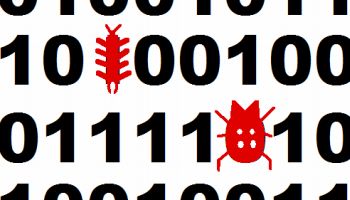Research in Motion has pushed out a patch for a critical flaw in how images are processed on the BlackBerry Enterprise Server.
The BlackBerry maker said the vulnerability ranked at the top of the severity scale in terms of exploitability.
The company issued a patch 11 August to address the flaws in the back-end software used by organisations to manage all the BlackBerry devices deployed within the enterprise.
Not Smartphones
The vulnerabilities were in several versions of BES for Exchange, Lotus Domino and Novell GroupWise. The patches are available for the latest versions of each email platform. Administrators on older versions of Exchange, Lotus Domino and GroupWise would have to upgrade the mail server first.
“It’s important to underline that these are not vulnerabilities in the BlackBerry smartphones themselves,” Graham Cluley, a senior technology consultant at Sophos, wrote in the Naked Security blog. Just like previous BlackBerry vulnerabilities, the potential attack is against the BlackBerry Enterprise Server, which is used by businesses, Cluley said.
 For administrators who can’t immediately install the update for whatever reason, RIM suggested temporary measures that would prevent the BlackBerry Enterprise Server from processing inline images and rich content. Administrators should modify the IT policy rules in BES for inline content requests and for disabling rich content emails.
For administrators who can’t immediately install the update for whatever reason, RIM suggested temporary measures that would prevent the BlackBerry Enterprise Server from processing inline images and rich content. Administrators should modify the IT policy rules in BES for inline content requests and for disabling rich content emails.
Attackers could exploit the bugs by sending malicious image files to the targeted user’s BlackBerry smartphone. The vulnerabilities were found in how the BlackBerry MDS Connection Service and the BlackBerry Messaging Agent handled PNG and TIFF image files, according to RIM.
An attacker could exploit the BlackBerry MDS Connection Service by creating a specially crafted web page with malformed images and sending emails and instant messages to the users to persuade them to go to the site. The bug in the BlackBerry Messaging Agent is even more sinister as it could embed malicious PNG and TIFF messages inside the email message and send it to the user’s BlackBerry device. The presence of the malicious image on the device is enough to launch the attack; users don’t even need to open the email or click on a link or image to be compromised, RIM said.
Segmented Configuration
“These updates replace the installed image.dll file that the affected components use with an image.dll file that is not affected by the vulnerabilities,” RIM said in its advisory.
An attacker would be able to remotely access and execute code on the Blackberry Enterprise Server upon a successful exploit, according to RIM. Depending on the privileges associated with the service account and how the network is configured, the attacker may be able to hop to other systems on the network and steal information after compromising the BlackBerry server, Cluley said. The malicious code may also cause systems to crash and interrupt important communications and disrupt the workplace.
To prevent attackers from moving around the network, RIM recommended that network administrators install the BES in a “segmented network configuration,” or on a computer located on a separate network from all other systems, according to the advisory.
These vulnerabilities have been assigned a CVSS (Common Vulnerability Scoring System) of 10, or high severity. The bugs have the following CVE identifiers: CVE-2010-1205, CVE-2010-3087, CVE-2010-2595, CVE-2011-0192 and CVE-2011-1167





